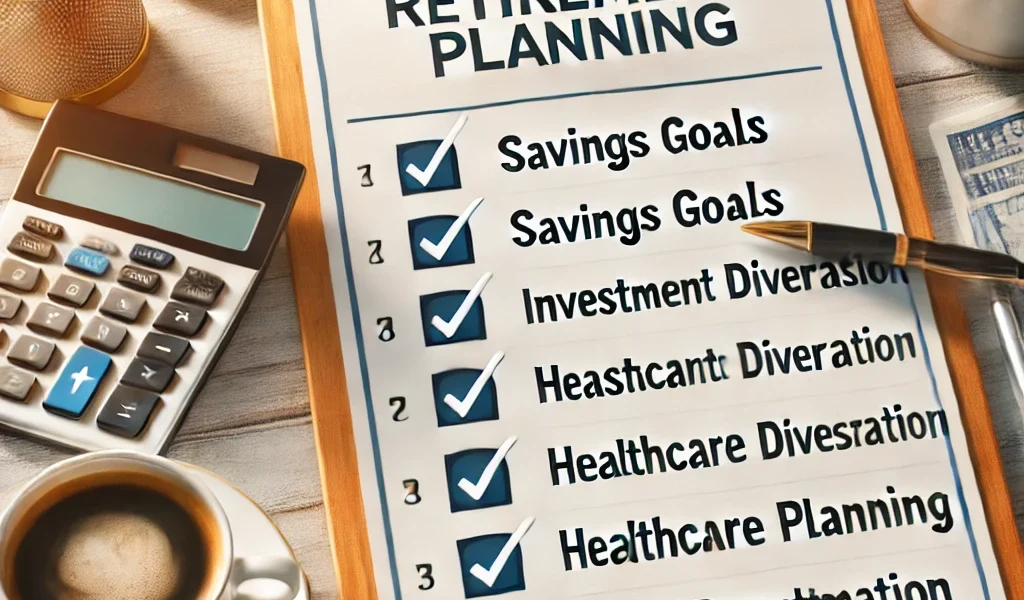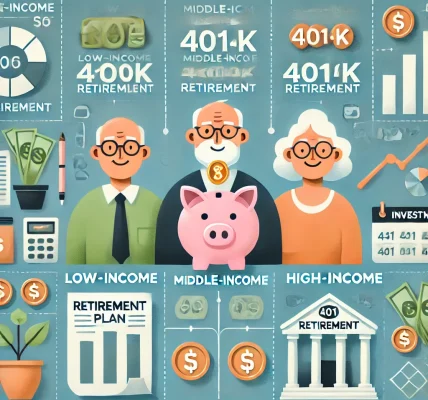Introduction
Retirement is a major life milestone that requires careful financial planning and strategic decision-making. Without proper preparation, you may find yourself facing financial stress instead of enjoying your golden years. A well-structured retirement plan ensures a comfortable and secure future, allowing you to maintain your lifestyle without financial worries.
This comprehensive retirement planning checklist covers the essential steps you need to take to achieve a worry-free retirement.
Step 1: Define Your Retirement Goals
Before diving into the financial details, outline what you envision for your retirement:
- Desired retirement age: When do you want to retire?
- Lifestyle expectations: Will you travel, downsize, or move to another location?
- Healthcare needs: Do you anticipate increased medical expenses?
- Financial obligations: Are there any ongoing liabilities (mortgage, loans, dependents)?
Clearly defining your goals helps in estimating the required savings and planning accordingly.
Step 2: Assess Your Current Financial Situation
Review Your Income Sources
Identify all potential income sources post-retirement:
- Social Security benefits (if applicable)
- Pension plans
- 401(k) or IRA savings
- Stocks, bonds, and mutual funds
- Rental or passive income
Calculate Your Net Worth
Determine your financial standing by calculating:
- Total assets (cash, investments, property, retirement accounts)
- Total liabilities (debts, loans, credit card balances)
- Net worth = Total assets – Total liabilities
Knowing where you stand financially allows you to make informed investment and savings decisions.
Step 3: Establish a Retirement Budget
Estimate Your Expenses
Your retirement expenses will differ from your current expenses. Categorize them into:
- Essential expenses: Housing, utilities, healthcare, food, insurance
- Discretionary expenses: Travel, hobbies, entertainment
- Emergency fund: Unexpected medical expenses, home repairs
Create a Sustainable Budget
A sustainable budget ensures that your income will cover your expenses throughout retirement. A general rule of thumb is the 4% withdrawal rate, meaning you withdraw 4% of your savings annually to maintain a steady income.
Step 4: Maximize Retirement Savings
Contribute to Retirement Accounts
Maximize your contributions to tax-advantaged accounts like:
- 401(k) or 403(b): Employer-sponsored plans with potential employer matching
- IRA (Traditional/Roth): Individual retirement accounts with tax benefits
- Health Savings Account (HSA): If eligible, this can be a great way to save for medical expenses tax-free
Diversify Your Investments
To ensure long-term growth, diversify your portfolio:
- Stocks & Bonds: Balance risk and stability
- Real Estate: Passive income and long-term appreciation
- Mutual Funds & ETFs: Professionally managed investment options
Step 5: Plan for Healthcare Costs
Healthcare can become a significant expense in retirement. Steps to prepare:
- Medicare Enrollment: Research and enroll in Medicare plans at age 65
- Long-term Care Insurance: Consider policies that cover nursing homes or assisted living
- Health Savings Account (HSA): Continue contributions if eligible
Step 6: Minimize Taxes in Retirement
Efficient tax planning ensures you keep more of your retirement savings:
- Tax-Efficient Withdrawals: Withdraw from taxable accounts first before tax-advantaged ones
- Roth IRA Conversions: Pay taxes now to enjoy tax-free withdrawals later
- Required Minimum Distributions (RMDs): Avoid penalties by withdrawing from traditional retirement accounts starting at age 73
Step 7: Create a Withdrawal Strategy
A well-planned withdrawal strategy helps sustain your savings:
- Follow the 4% Rule: Withdraw 4% of your retirement savings annually
- Prioritize Low-Tax Withdrawals: Use Roth IRAs and tax-free income first
- Adjust for Inflation: Plan for a 2-3% annual increase in expenses
Step 8: Manage Debt Before Retirement
Eliminate high-interest debts before retirement to reduce financial stress:
- Pay off credit card debt and personal loans
- Refinance or pay down mortgages
- Avoid taking new loans close to retirement
Step 9: Establish an Emergency Fund
Having an emergency fund ensures financial stability in case of unexpected expenses:
- Save at least 6-12 months’ worth of expenses
- Keep it in a liquid, easily accessible account (high-yield savings, money market accounts)
Step 10: Estate Planning & Legal Documentation
Ensure that your financial assets are well-managed and passed on according to your wishes:
- Create or update a will
- Designate beneficiaries for retirement accounts and life insurance
- Set up a power of attorney for financial and medical decisions
- Consider setting up a trust to protect assets and minimize estate taxes
Step 11: Monitor & Adjust Your Plan Regularly
Your financial situation and retirement goals may change over time. Review and adjust your plan every year:
- Rebalance investment portfolio
- Reevaluate expenses & income
- Update estate plans & insurance policies
Conclusion
A well-structured retirement plan provides financial security and peace of mind. By following this retirement planning checklist, you can ensure a smooth transition into your golden years. Start planning early, stay informed, and make proactive financial decisions for a worry-free future.
If you need professional guidance, consult a financial advisor to tailor a retirement plan that meets your unique needs!




